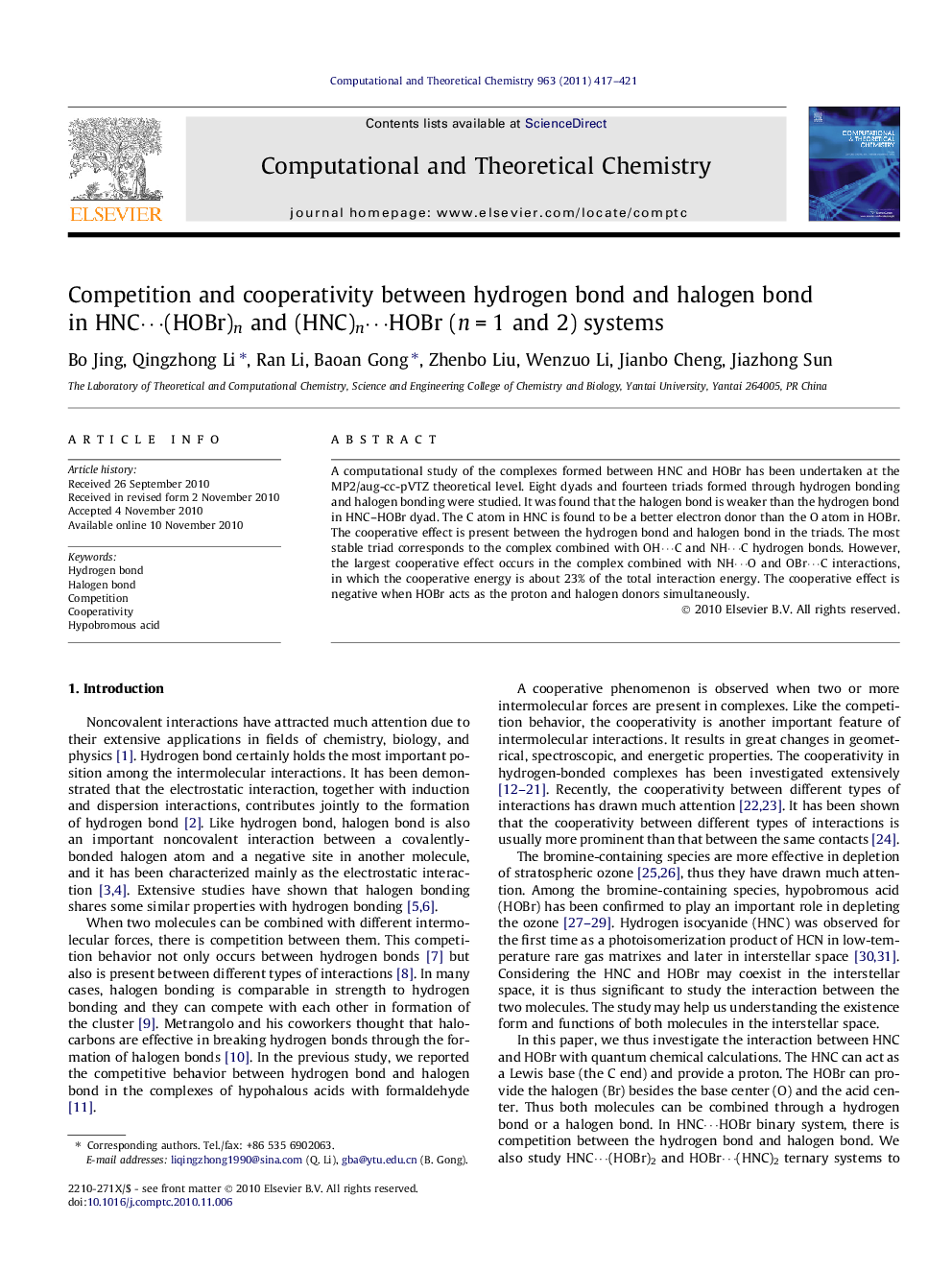| Article ID | Journal | Published Year | Pages | File Type |
|---|---|---|---|---|
| 5395394 | Computational and Theoretical Chemistry | 2011 | 5 Pages |
Abstract
A computational study of the complexes formed between HNC and HOBr has been undertaken at the MP2/aug-cc-pVTZ theoretical level. Eight dyads and fourteen triads formed through hydrogen bonding and halogen bonding were studied. It was found that the halogen bond is weaker than the hydrogen bond in HNC-HOBr dyad. The C atom in HNC is found to be a better electron donor than the O atom in HOBr. The cooperative effect is present between the hydrogen bond and halogen bond in the triads. The most stable triad corresponds to the complex combined with OHâ¯C and NHâ¯C hydrogen bonds. However, the largest cooperative effect occurs in the complex combined with NHâ¯O and OBrâ¯C interactions, in which the cooperative energy is about 23% of the total interaction energy. The cooperative effect is negative when HOBr acts as the proton and halogen donors simultaneously.
Related Topics
Physical Sciences and Engineering
Chemistry
Physical and Theoretical Chemistry
Authors
Bo Jing, Qingzhong Li, Ran Li, Baoan Gong, Zhenbo Liu, Wenzuo Li, Jianbo Cheng, Jiazhong Sun,
